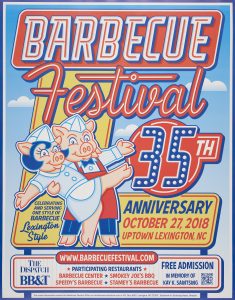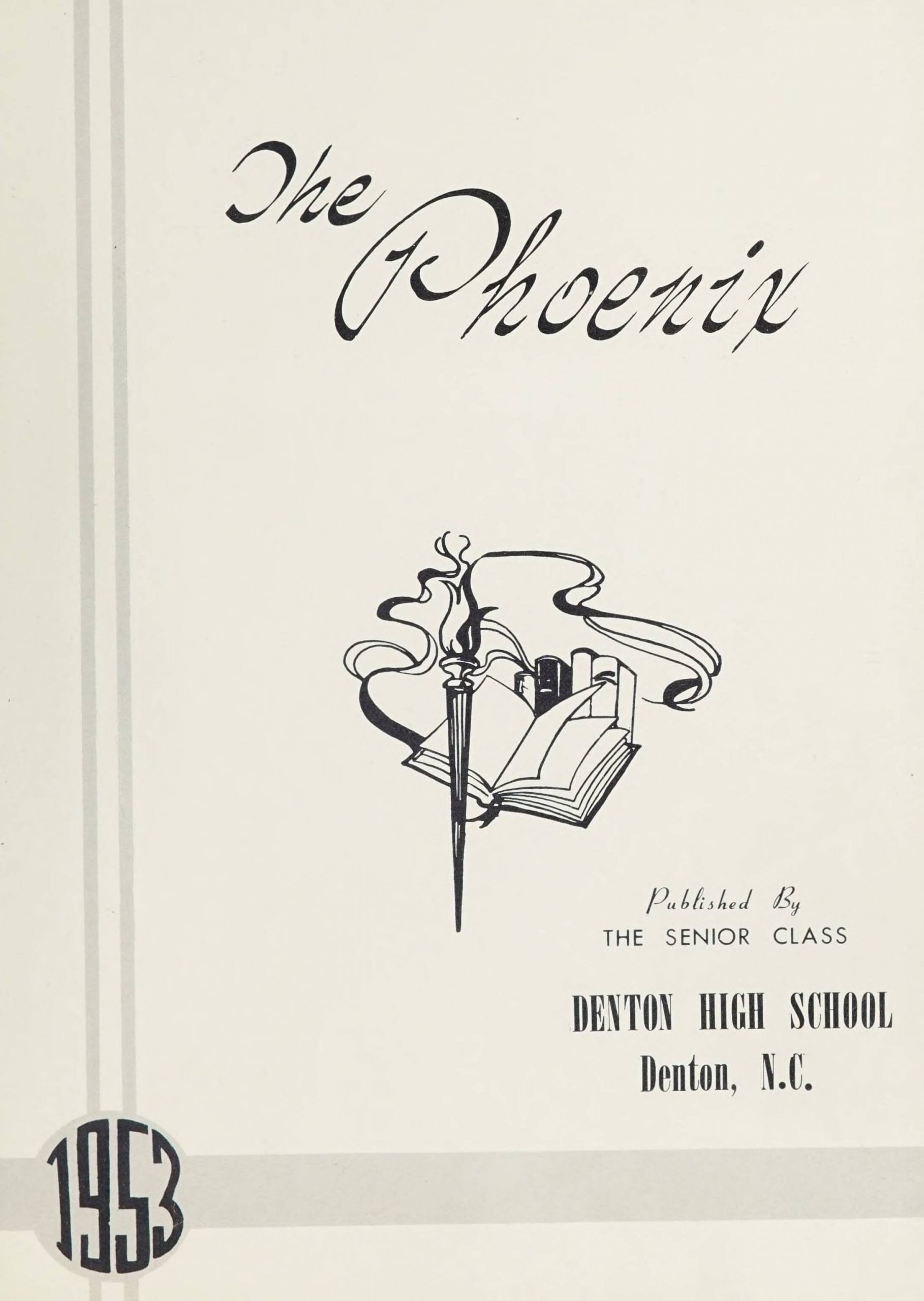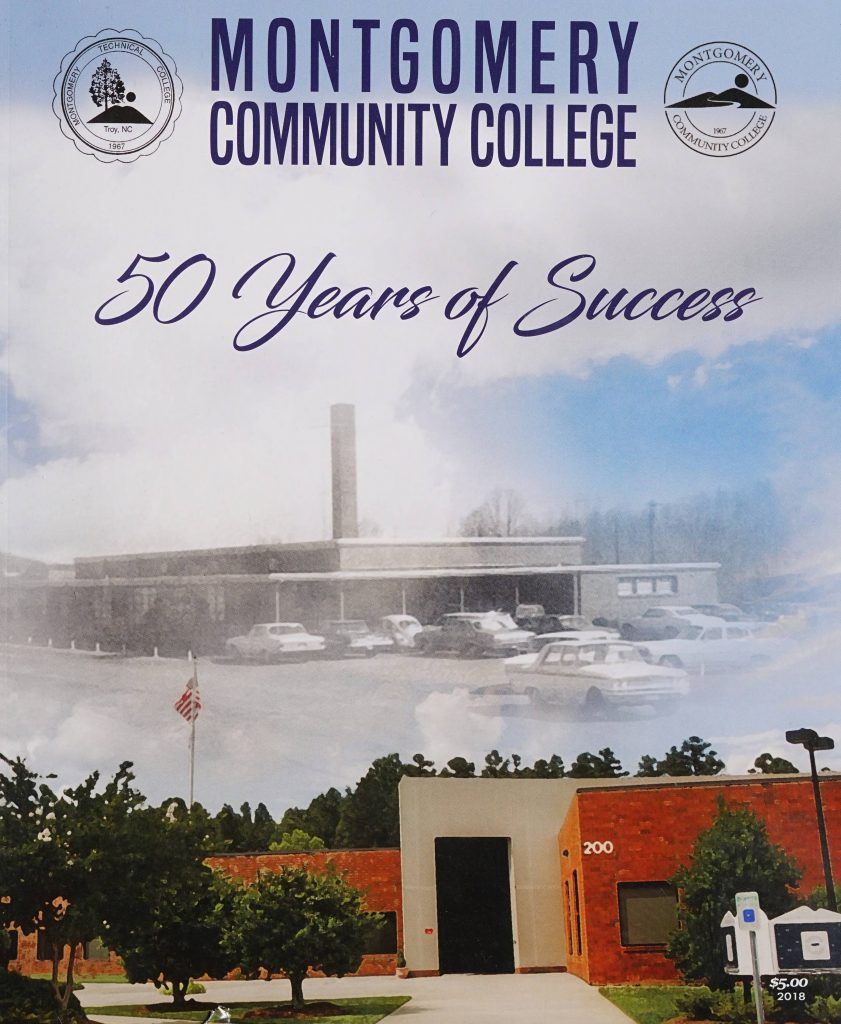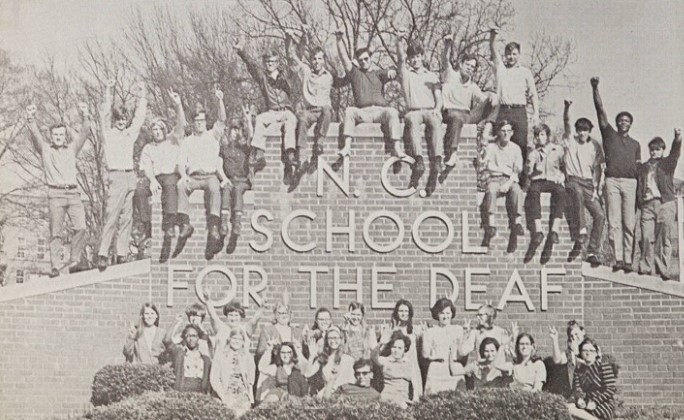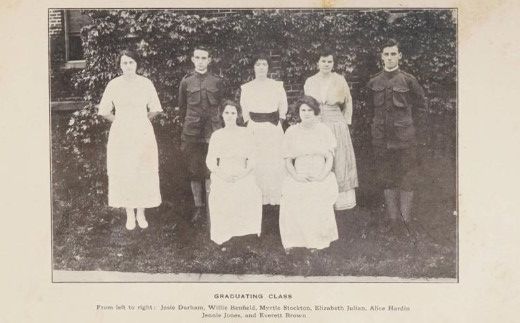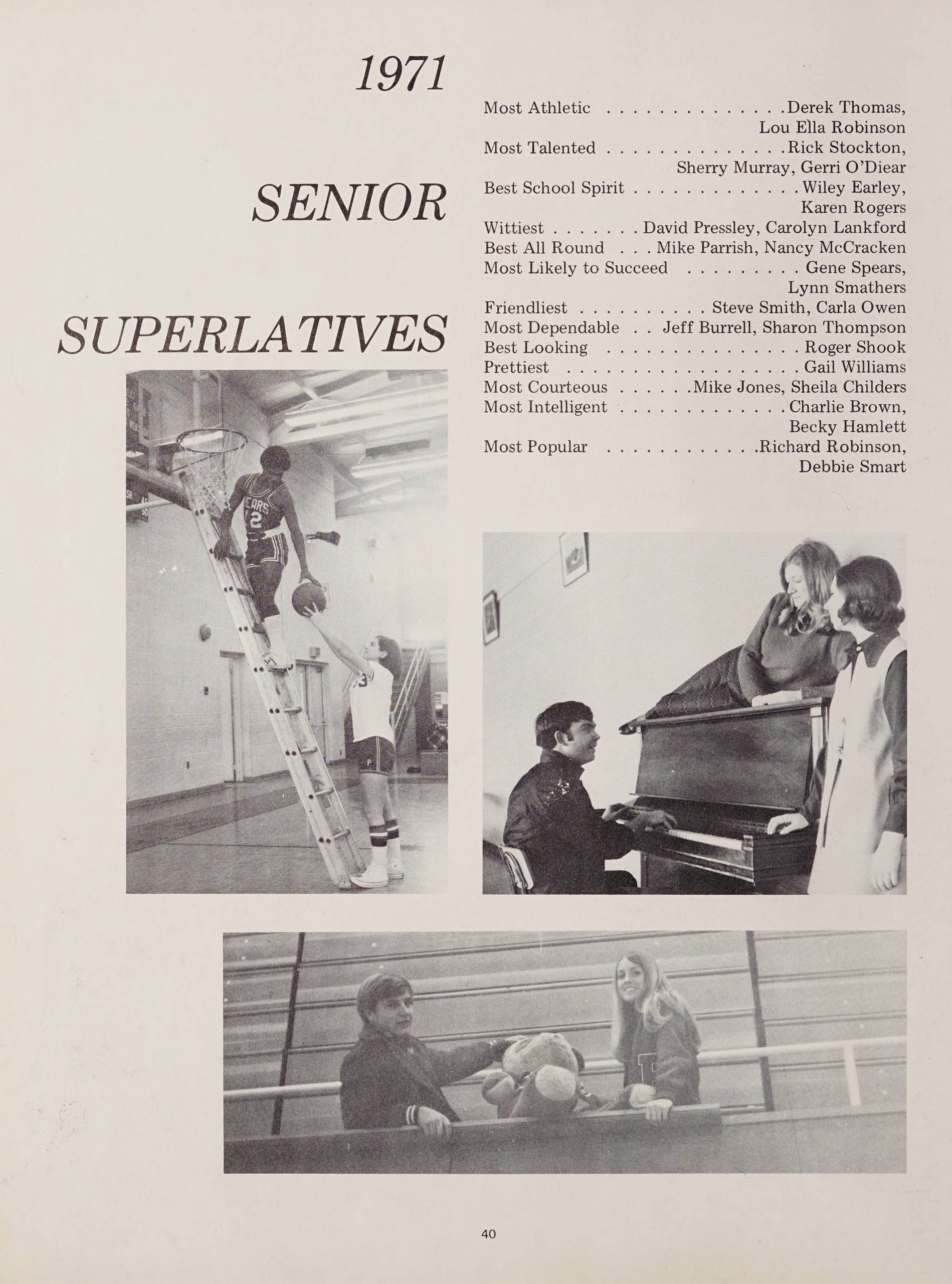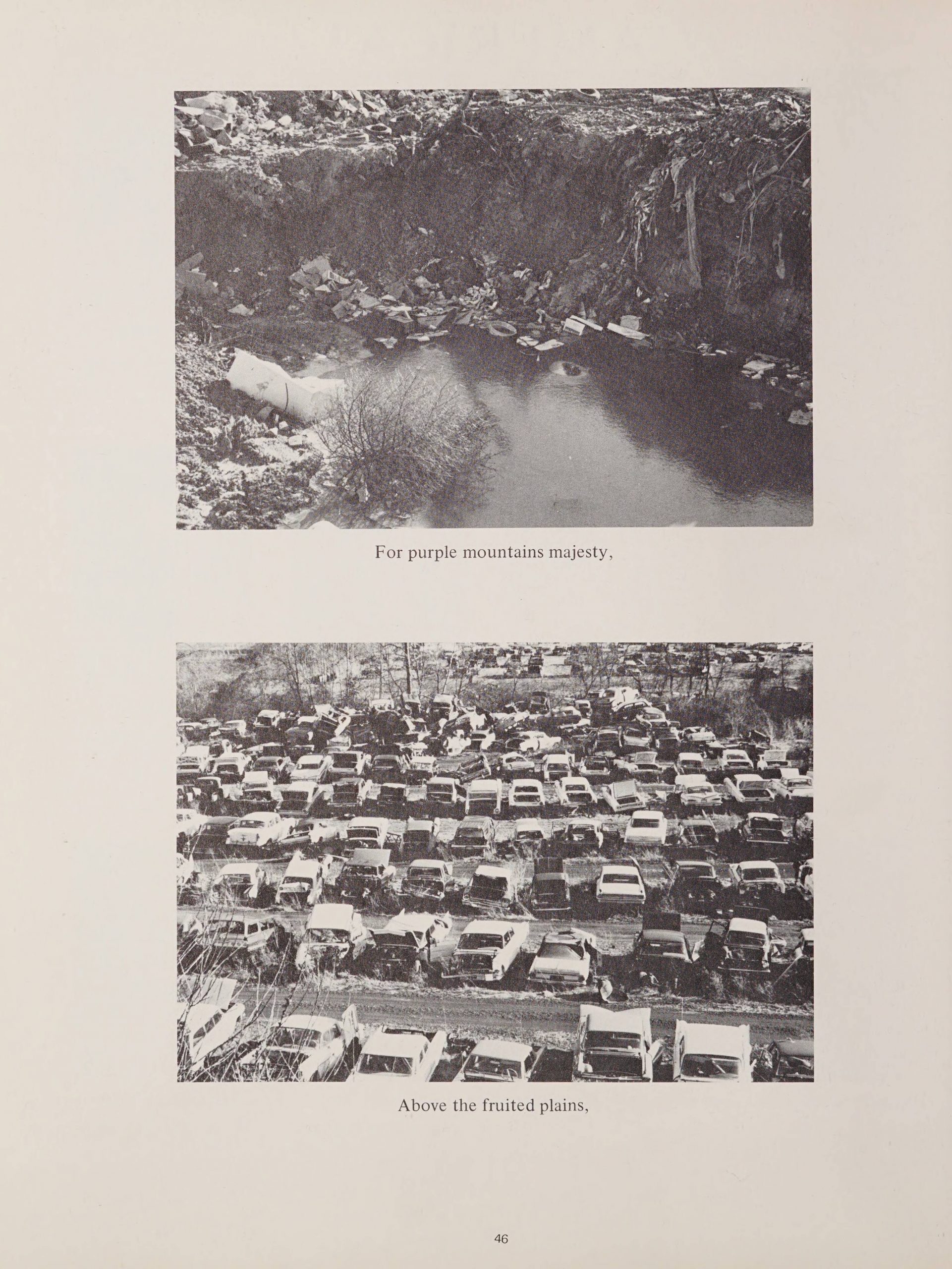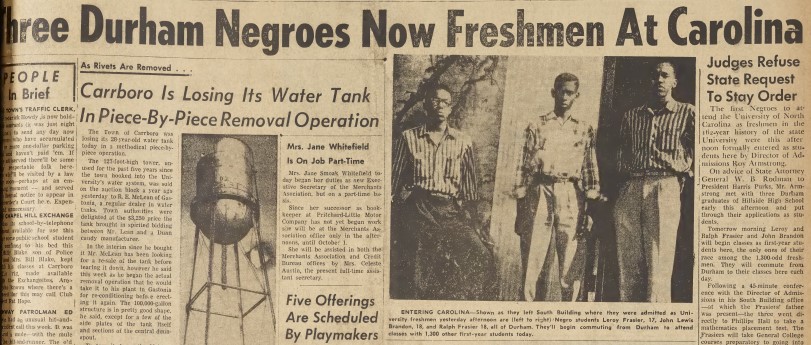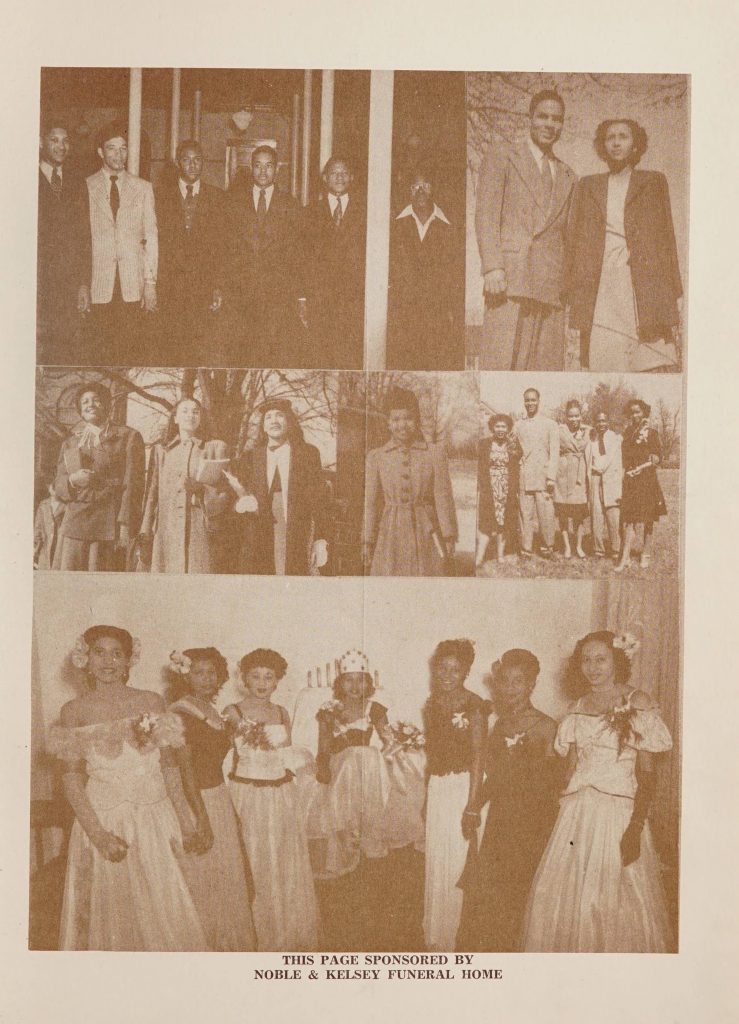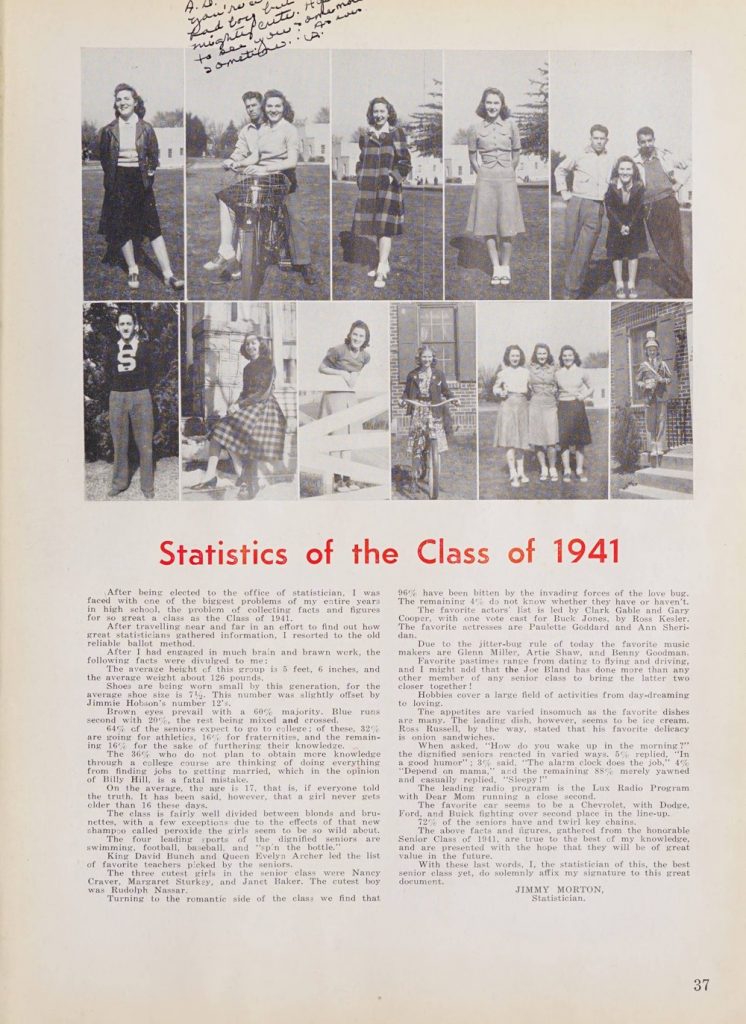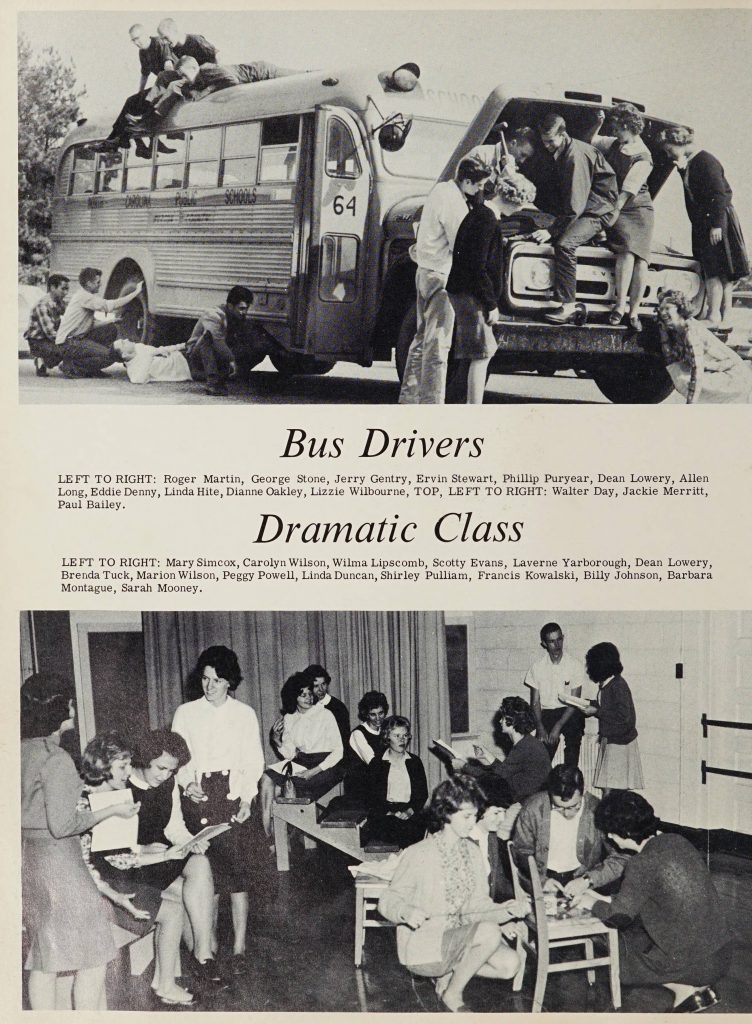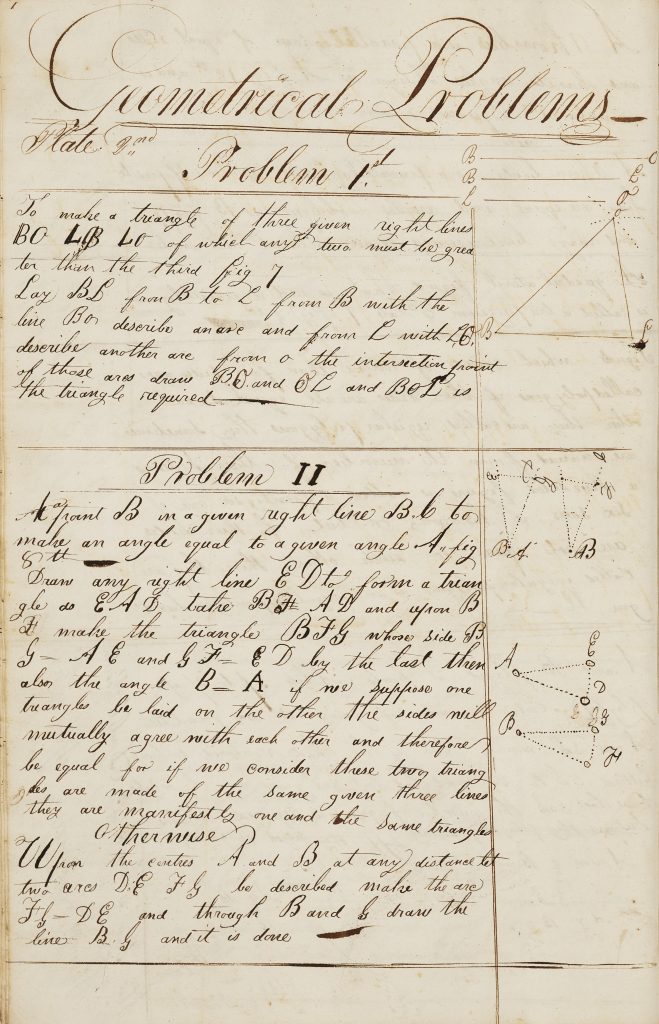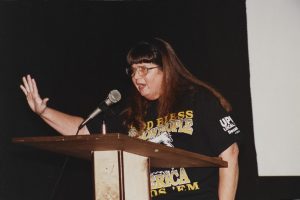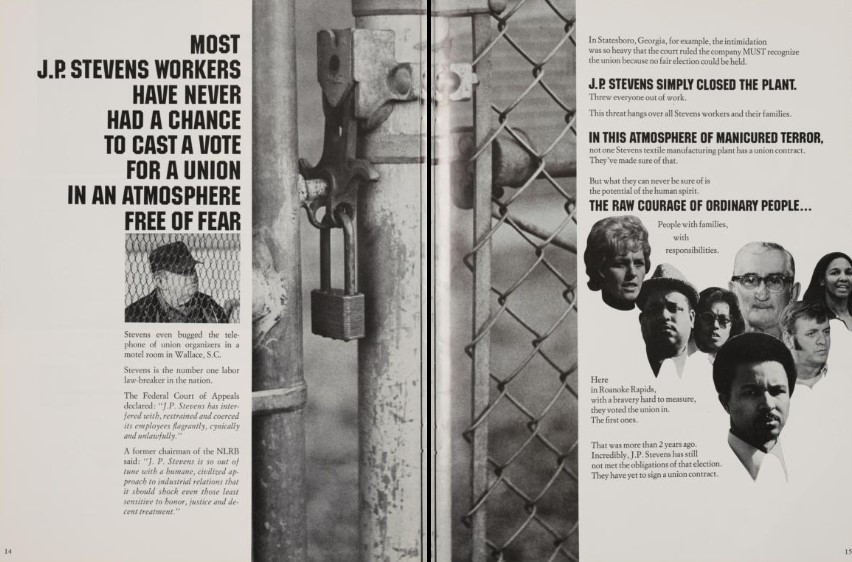DigitalNC is happy to announce
35 yearbooks from our new partner, the
North Carolina School for the Deaf. All of these yearbooks are from said school and cover years between 1915-1971.
The North Carolina School for the Deaf was founded in 1891 in Morganton, NC, located in the western part of the state. In a move to separate hearing impaired students from vision impaired students, whom all had a place under one school in Raleigh that went by the demeaning name of the North Carolina Institution for the Deaf and Dumb and the Blind, funds were established for the school at Morganton. The first brick laid for the school (with a name close to it’s sister school; the North Carolina School for the Deaf and Dumb) was by two future pupils, Maggie LeGrand and Robert C. Miller, on May 16, 1892. Doors were opened to 100 pupils on October 2, 1894. In 1907, the name officially changed to The North Carolina School for the Deaf (Class Book, images 17-18).
Funds from the state’s building program and a W.P.A. grant in the early 1940s allowed the school to construct cold storage, fencing, barns, a poultry house, playgrounds, an athletic field, as well as renovate school buildings to be properly fireproofed and ventilated (The Deaf Carolinian, image 22). Fast-forward to 1965, and the school has a large campus, with buildings both original and new.
To learn more about the history of the North Carolina School for the Deaf, please visit
their website. To view more yearbooks from across North Carolina, visit the
North Carolina Yearbooks page.
References:
North Carolina School for the Deaf. Class Book, Class of 1934 North Carolina School for the Deaf. https://lib.digitalnc.org/record/237179?ln=en#?c=0&m=0&s=0&cv=17&r=0&xywh=77%2C118%2C2410%2C1464
North Carolina School for the Deaf. The Deaf Carolinian. https://lib.digitalnc.org/record/237183#?c=0&m=0&s=0&cv=21&r=0&xywh=455%2C2058%2C2900%2C1762




